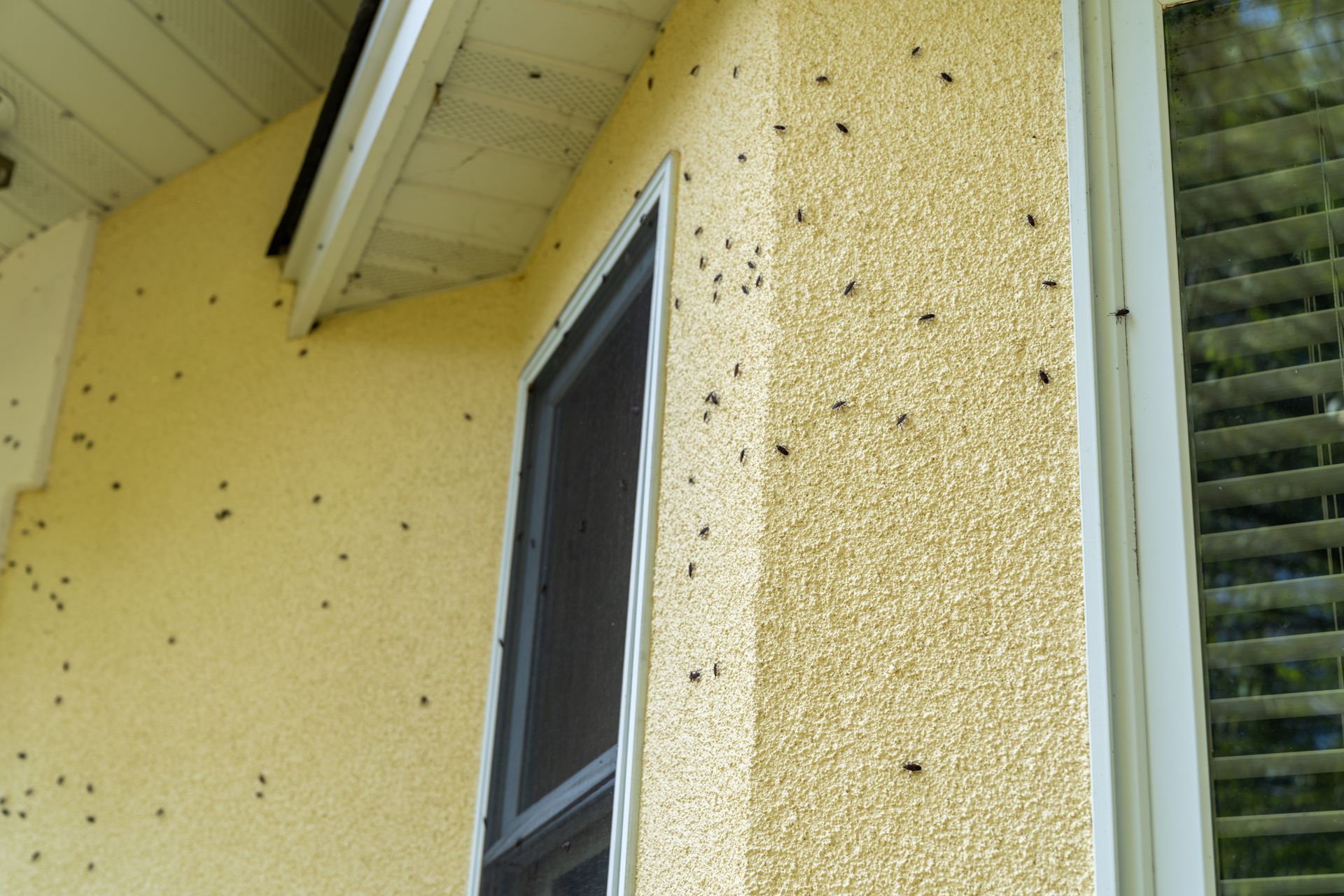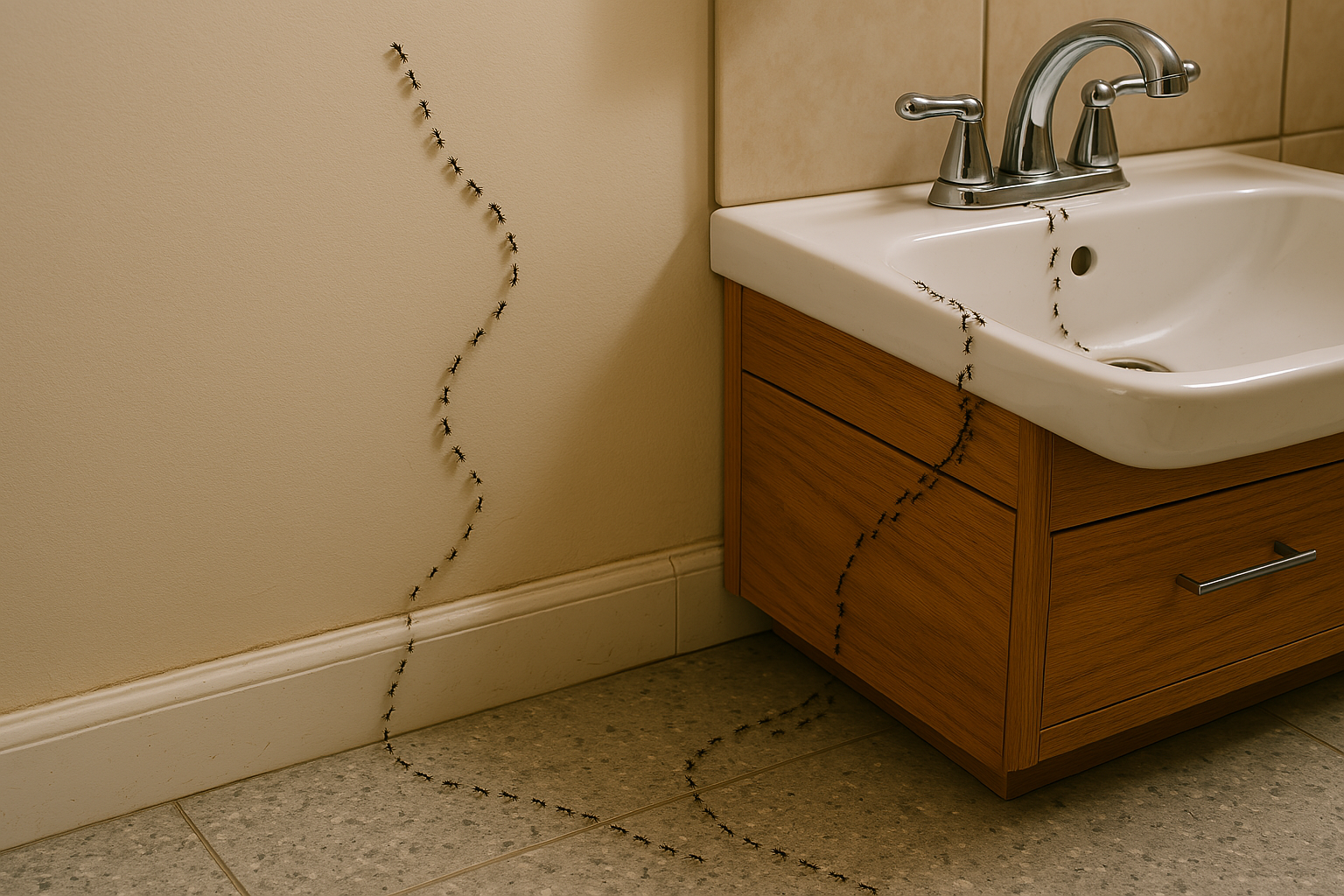What Attracts Boxelder Bugs to My House?

Boxelder bugs are a true bug that have evolved over the years to rely on boxelder trees for their primary source of food and shelter. They rely on these trees due to the relationship that boxelder bug nymphs have with the seed pods that are produced by female seed bearing boxelder trees. Since boxelder nymphs rely on these seed pods for food, boxelder trees are critical to the ongoing reproduction cycle of boxelder bugs. This makes boxelder trees the largest attractant for boxelder bugs outside of a few other critical things that boxelder bugs look for. Some of the other things that boxelder bugs are attracted to include mates and covered habitats that protect them from the cold and predators. Boxelder bugs prefer to stay warm so they will come out during the day to sun themselves on the surface of boxelder trees, but they will return to their hiding places under the tree bark to keep them from being exposed at night when it gets cool.
What Are Boxelder Bugs?
Boxelder bugs are flat, elongated, oval bugs that have black bodies with red markings. Their bodies are also covered by 2 large black wings with red edges which give them a particular look that is easy to identify. They are native to North America and are found primarily on boxelder trees, but they can also be found on other maple, ash, and fruit trees. Boxelder bugs are considered a neutral pest since they have little impact on the plants they feed on. Their presence is mostly annoying due to boxelder bugs having a defense mechanism that released chemicals that have an offensive smell to deter predators. Otherwise, they are incapable of biting or inflicting other harm or damages.
During the day, boxelder bugs will seek out warm surfaces that are oriented to the south or west to be facing the sun. Sometimes this results in boxelder bugs covering the surface of the trees they are feeding on. Other times, the boxelder bugs will congregate on windows, concrete, siding, and other flat surfaces that capture and radiate heat. When this happens, the boxelder bugs may find cracks or crevices that give them access into a home which can cause the start of an infestation.
When Do Boxelder Bugs Become Active?
Boxelder bugs hibernate during the winter when it is cold outside. During this time, they will seek out shelter that will provide them warmth and a safe place to remain dormant. This sometimes results in boxelder bugs finding their way inside a home and aggregating in large numbers. Once late spring arrives and temperatures start to rise, hibernating boxelder bugs will become active and start their search for food. This will cause clusters of boxelder bugs to start moving towards the exits so they can find their way outside. Once outside, boxelder bugs will seek out nearby boxelder trees to start feasting after several months of hibernation. After several weeks of regaining strength, the boxelder bugs will start looking for mates to start the reproduction cycle. This will continue through summer and fall until temperatures start to drop and the boxelder bugs prepare to hibernate again.
What Are Boxelder Bugs Attracted To?
Boxelder bugs are largely driven by the same things that most living creatures are driven by: food, water, shelter, and mates. There is one other thing that appears to drive boxelder bug behavior and that is warmth. Boxelder bugs are most active during warm months where they spend much of their time eating, mating, and sunning themselves to absorb the heat from the sun. This is commonly seen at the foot of boxelder trees where large populations of mature boxelder bugs and boxelder nymphs can be found sunning themselves and feeding on the fallen seedpods of the boxelder tree. Once temperatures start to drop, boxelder bugs will transition into preparing for hibernation. When this time comes, boxelder bugs want to find a safe warm place to lay low for several months.
What Do Boxelder Bugs Eat?
Boxelder bugs are classified as sap suckers who feed on the fluid of plant leaves using their straw like proboscis. Even though adult boxelder bugs primarily feed on the developing leaves of boxelder trees, they will also occasionally feed on the leaves of other maple and ash trees as well as the fruit from apple and plum trees. Boxelder nymphs, on the other hand, have developed to feed on the fluids found inside the delicate skin of the boxelder tree’s seed pods. These seed pods are commonly seen falling to the ground while spinning like a helicopter.
Boxelder Habitat
Boxelder bugs’ habitat is mostly found where large populations of boxelder trees exist. The bugs can be found covering the surface of these trees during the day. After it gets dark and temperatures cool at night, the bugs will retreat to the small gaps found under the boxelder tree bark. Attempting to get rid of boxelder trees to minimize the presence of boxelder bugs can prove futile since boxelder bugs can fly long distances. This means that if there are boxelder trees anywhere near a property line, there is still a strong possibility of a boxelder bug infestations. It also doesn’t help that boxelder trees are a fast-growing tree that is native to a lot of the US.
Boxelder Mates
Boxelder bugs need to find mates in order to lay eggs. This typically happens in the late spring or early summer, after boxelder bugs awaken from hibernation and are able to regain their strength from feeding. Once a boxelder bug finds a comfortable place to hide and eat, they will start to release an aggregation pheromone to attract other boxelder bugs to increase the likelihood of finding a mate. This is the reason why boxelder bugs are clustered together in large groups around the base of boxelder trees.
Light and Warmth
Any surface that faces the sun during the day can attract boxelder bugs. Boxelder bugs prefer to lay out when the sun is out so they can warm up after colder evenings and nights. This means that sidewalks, foundations, siding, porches, and windows are all places where boxelder bugs may potentially aggregate to expose themselves to the daytime heat. Preventing boxelder bugs can be as simple as providing shade to any area that boxelder bugs aggregate to minimize their ability to stay warm.
Why Do I Have Boxelder Bugs in My House?
The most likely reason there are boxelder bugs around your home is that there are boxelder trees nearby. These bugs are particular eaters that feed on a handful of tree types so finding boxelder bug populations means that they have a source of maple or ash trees close by. Since boxelder bugs are neutral pest, there isn’t too much to be concerned about during warmer months when they prefer to be outside. However, prevention strategies should be taken before winter to ensure that boxelder bugs don’t invade your home when they start to prepare for hibernation. If exclusion strategies are not implemented, boxelder bugs may slowly invade your home until their populations get out of hand.
How to Get Rid of Boxelder Bugs
Getting rid of boxelder bugs outside isn’t critical due to the impact they have on their ecosystems. Even if outdoor boxelder bug extermination was prioritized, it would most likely require boxelder tree removal to be effective. This may prove to be both extremely difficult and not as effective as planned. This is largely due to boxelder trees being a prevalent tree found all over the US and as long as there are boxelder trees close by, then boxelder bugs are not too far off. Even if every boxelder tree was removed from a property, the likelihood of other boxelder trees being close by would make this strategy largely ineffective. Instead, an alternative would be to spray down clusters of boxelder bugs using a soapy water mix. This should disturb the boxelder bug populations as well as help mask the aggregation pheromones that attract other boxelder bugs close by.
If boxelder bugs have invaded a home, boxelder bug removal become more important due to the smell they introduce and the aggregation pheromones they release that attract other boxelder bugs. The best way to get rid of boxelder bugs found inside is to use a vacuum cleaner to suck them up and then discard them safely. This method is the best because boxelder bugs can leave a reddish stain when crushed.
Contact EcoGuard if You Are Dealing with Boxelder Bugs
If you are dealing with large populations of boxelder bugs inside your home, it is likely too late to stop the infestation. At this point, calling a professional pest control expert is recommended because the boxelder bugs need to be safely collected and discarded. Once they are removed, exclusion strategies should be implemented to prevent boxelder bugs from returning. EcoGuard Pest Management has a team of qualified and experienced boxelder bug control experts who can inspect your property for any problematic areas and treat the space effectively and efficiently. Call today to schedule an inspection.

















